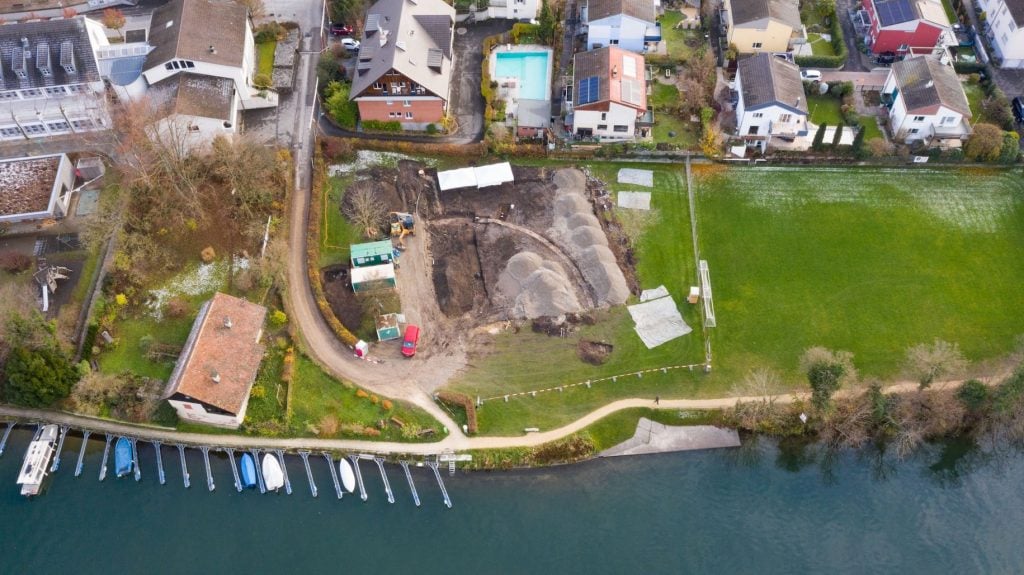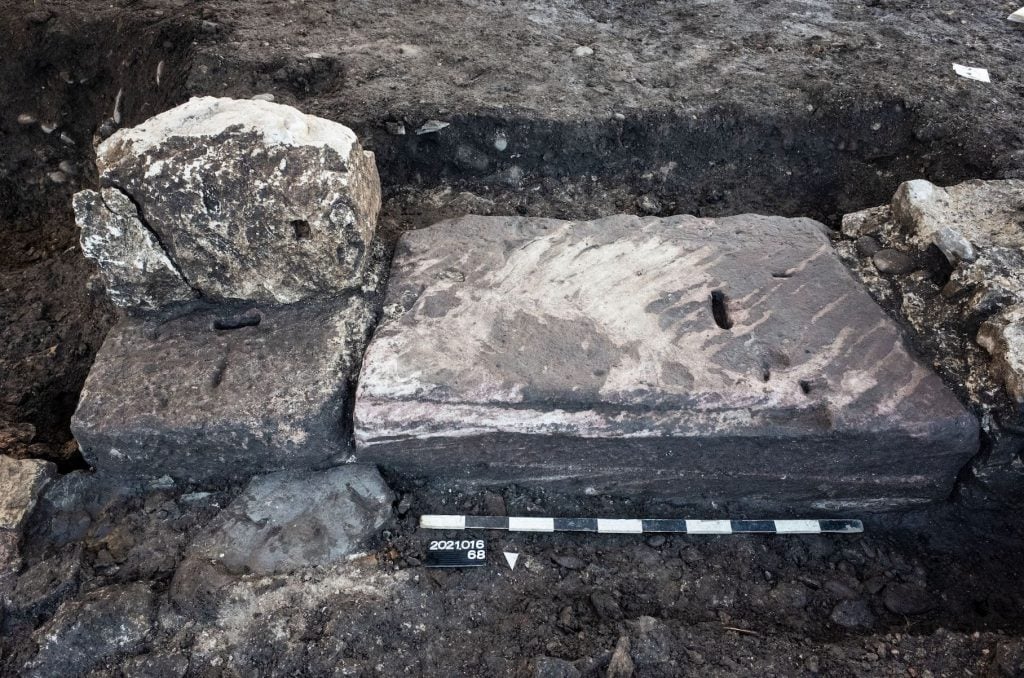Archaeology & History
Archaeologists in Switzerland Have Discovered What Could Be the Last Roman Gladiator Arena Ever Built
That would make it the ultimate gladiator arena.

That would make it the ultimate gladiator arena.

Sarah Cascone

Construction of a new boathouse at the Basel Rowing Club in Switzerland has turned up the ruins of what might have been the last gladiator arena the Romans ever built.
Archaeologists from the Aargau canton were monitoring the work when they discovered the oval-shaped amphitheater, according to the Canton of Aargau’s department of education, culture, and sport. The style of the construction, with stone and mortar walls, points to it having been built in the 4th century, near the end of the Roman Empire. Excavators also found a coin on the site that dates between 337 and 341—the youngest Roman arena found to date.
“That makes the find extraordinary, because it is a time when no new amphitheaters were actually built,” Jakob Baerlocher, lead archaeologist at the site, told SRF. “Existing arenas have been renovated, expanded and in some cases rebuilt. But to have a new one pop up out of the ground is extraordinary.”
It’s the third Roman amphitheater found around the Swiss town of Kaiseraugst, which takes its name from the ancient Roman city of Augusta Raurica, and the eighth for the country as a whole. Archaeologists believe the newly discovered structure was built on the site of an abandoned quarry.

Excavations of the newly discovered Roman amphitheater on the Rhine in Switzerland found this gate with a threshold made of sandstone. Photo courtesy of Canton of Aargau.
It measures about 164 feet by 131 feet—much smaller than the 600-foot-by-500 foot Colosseum in Rome, which was built about the year 70.
“It cannot be ruled out that gladiator fights also took place there, but it is improbable,” Baerlocher added, noting that death by combat became less popular as the empire adopted Christianity. “We assume that animal hunts were performed in such amphitheaters, especially in late antiquity.”
Excavations have uncovered two large gates with sandstone blocks at the threshold and plastered inner walls, as well as evidence of wooden grandstands and a seat for a Roman official.